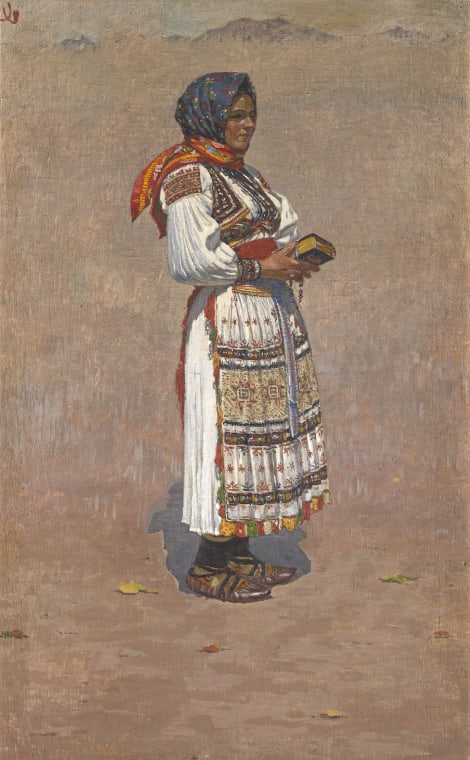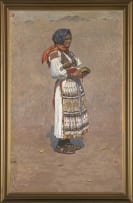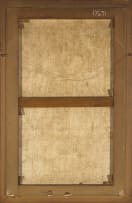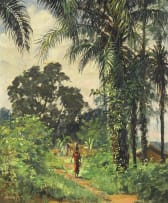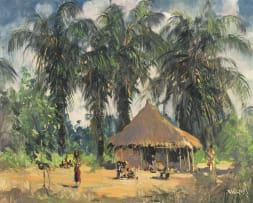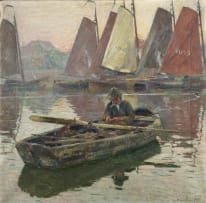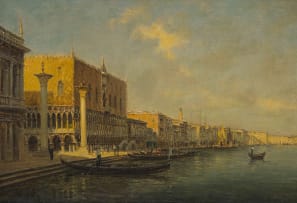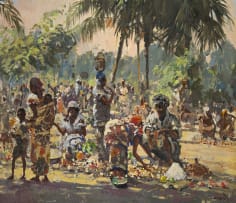Transcending Boundaries: International Modern and Contemporary Art
Live Virtual Auction, 25 October 2023
International Modern and Contemporary Art
Incl. Buyer's Premium & VAT
About this Item
signed
Notes
"I worked my whole life not for fame and recognition not for money and other advantages not to out-do others but only for the simple purpose of demonstrating that I am a full member of the community of people I sought to capture as truly as possible through my art." -Joža Uprka
Joža Uprka documented the everyday folklife of Moravia (modern-day Eastern Czech Republic) through his unique combination of the Impressionist and Art Nouveau styles. His compositions are bucolic and traditional, displaying a nostalgia for simpler times in the face of the disruptive forces of urbanization and industrialization that were taking place in the 19th and early 20th Century.
Uprka's style progressed from the tight and polished brushwork and earth-toned palette favoured by the Prague and Munich Schools at the time to a more flamboyant and robust style, rich with bright colour and looser brushstrokes. This latter style was influenced by his exposure to Impressionism, which culminated in 1894, when he exhibited at the Grand Salon in Paris. Woman in Traditional Dress was likely created somewhere between this transition. In the ground, we see the favouring of an earth-toned palette but painted very loosely, whereas the sitter's dress is painted in vibrant colour using short, curt brushstrokes combining both the style of the artist's initial training, as well as the beginning of his amble into Impressionism. It is little known that between 1930 and 1940, Uprka was one of the most sought-after, best-selling and prized Czech painters.1
Uprka studied at the Academy of Fine Arts in Prague and then at the Academy of Fine Arts in Munich, Germany. At the latter, he was one of the founders of the Czech student organisation called 'Škréta', which included fellow artists like Alfons Mucha, Pavol Socháň, and Luděk Marold. In the early 1890s, he studied in Paris on a scholarship and in 1894 he received an 'honourable mention' for his painting Pilgrimage to St. Anthony that was exhibited at the Salon. In 1897, he held his first major exhibition in Prague.
In 1995, a Joža Uprka gallery was opened in Prague and in the early 2010s a permanent exhibition was installed in the town of Uherské Hradiště. From October 2018 to March 2019, the first USA exhibition of Uprka's work was mounted at the National Czech and Slovak Museum and Library in Cedar Rapids, Iowa. The exhibition then travelled to the Spurlock Museum of World Cultures at the University of Illinois Urbana-Champaign from 5 November to 1 December 2019.
1. Dr. Petr Vašát, A Brief History of Joža Uprka and His Rise to Fame in National Treasure: The Art of Joža Uprka from the George T. Drost Collection (exhibition catalogue), n.d.
